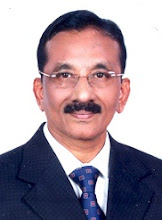The Thrissur Pooram is the most colourful and famous temple festival of Kerala. The pooram fireworks performed by the two major participants namely, Paramekkavu and Thiruvambadi is a fantastic event. The fireworks held at Thekkinkad ground near the Vadakkumnathan Temple start in the early hours of the night and last for several hours.
Thrissur pooram is now going on at Thrissur.The fireworks will start at 3AM in the morning.It is a must watch festival and fire work.
The impressive processions of those Thriuvambadi Bhagavathy from the Thiruvambadi Sri Krishna Temple and the Paramekkavu Bhagavathi from Paramekkavu temple are the major and the main part of the Pooram.highlights of the pooram are Kudamatam and the firework show known as 'Pooram vedikettu'. The celebrations which last for over 36 hours includes parasol displays and firework shows.
Fireworks are an essential part of almost all events in Kerala .But in Thrissur Pooram; the fire works are distinct in character, performance, excellence and magnitude. Both Thiruvambady and Paramekkavu temples compete with each other to provide the crowd with the best and the most unexpected.
People come from faraway places to watch this amazing display of pyrotechnics. There are four major firework displays in Thrissur Pooram. The ‘sample fireworks’ on the day before the Pooram, the colorful sparklers that light up the sky (amittu) by both sides on the Pooram evening after the Southward Descent, the most impressive event that mark the peak of Pooram celebrations in the early morning hours, and the final fireworks the following noon after the Goddesses bid farewell to each other that mark the end of Pooram.
The chemistry : The technique is a mixture of sound, light and strength, the proportion may vary according to the type –say amittu( less sound more colour full), dynamite (High pitch sound only) Earlier potassium chlorate was used to increase the loudness and was replaced by potassium nitrate since earlier is more accident prone. The colour full display of amittu was started in Thrissur pooram . Thanks to Dr.T.C. Krishnamenon for his able guidance.
Some of the combinations
Stonshiam Carbonate – Dark Red
Lithium Carbonate – Light Red
Calcium Chloride - Orange
Sodium Nitrate - Yellow
Barium Chloride – Green
Copper Chloride –Blue
Titanium and Aluminum – White
This is only a guide line and proportion is the skill of the technocrat and Aluminum powder, magnesium etc are added to give some gimmicks.
According to sources, an active member of Thrissur Pooram committee witnessed a Chinese firework display during his visit to the Park Fare Exhibition at Madras about 80 years ago. Inspired by the spectacle, he brought some items of Chinese fireworks to Thrissur like poothiri, lathiri, moolipeevu, vaanam etc. It obviously fired popular imagination and in no time, the art and craft of fireworks was taken up by enterprising indigenous families, who developed it into the pulsating event that it is now. Every year new and never-seen-before items are added to the fireworks, with both the temples devoting a large share of resources for it.
The earliest masters of fireworks display, like Kuriya, Ponnuveetil Gopalan Nair, Vellattu Narayana Panicker, Chelapadan Anthony, Vadakkethala Kochapu etc were not formally or technically trained in the art. They learned it through experience and experimentation and virtually developed it into a major industry. All the fireworks-managers of today are the followers of these pioneers. For a long time the responsibility of the Paramekkavu fireworks was vested with Karayarakattil Jose, who has now retired from the scene.
It was only in the early 1970’s that a fixed schedule for fireworks display was introduced. Until then whichever party - Paramekkavu or Thiruvambady - that reaches the pandal first would begin their fireworks display. As this led to a lot of misunderstandings and also untoward incidents, a rotation system was introduced. According to this, each temple would take turns to light their fireworks first. From then on, both the parties have followed this system.
The fame of the Thrissur fireworks crossed boundaries and reached USA and a master was invited to display fireworks in connection with a presidential Sworn - in USA







